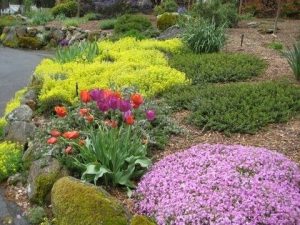Ah, spring… bringing rain showers and ample sunshine to make the weeds pop! Weed control is not a one-time miracle; it’s an on-going, annual process. And there’s still time to put together your weed-control plan for this year.
What is a Weed: Ralph Waldo Emerson said, “What is a weed? A plant whose virtues have not yet been discovered.” The simplest definition of a weed is a “plant growing where it’s not wanted.”
An example is Tree of Heaven (Ailanthus altissima). In the book, A Tree Grows in Brooklyn, the author used Tree of Heaven as a metaphor for the ability to persevere in the face of adversity. Unfortunately, along California Highway 49 in a natural environment, that very persistence makes Tree of Heaven a weed! In fact, according to the California Master Gardener Handbook, one of the characteristics that makes a plant “weedy” is persistence.
The other two indicative weedy characteristics are competitiveness-the ability to perform well, and perniciousness-the ability to do harm. Additional weedy traits include rapid establishment, quick growth, early maturation, prolific seeding, environmental adaptation, and relative freedom from natural herbivores and diseases.
Where Do Weeds Come From: Some “weeds” are California native plants. Coast fiddleneck (Amsinckia intermedia) and California lupine (Lupinus spp.) are both wildflowers. However, growing in pastures, they are poisonous to livestock.
Weed seeds of established invasive species can be transported in livestock feed, on construction equipment, via vehicle travel, and during construction projects. Many escaped out-competing plants, such as brooms, vinca major, and English ivy were introduced intentionally as ornamental landscape plants.
Weed-Free Forage: A Weed-Free Forage list, compiled by UCCE Central Sierra, is now available at http://www.cdfa.ca.gov/plant/PE/index.html and on the website of the California Invasive Plant Council, http://www.cal-ipc.org/ip/prevention/index.php The list offers local sources for weed-free animal feed and erosion control materials such as straw wattles. The list was created from contact information provided by county Agriculture Departments, weed-free certified growers, providers, and retailers.
Weed-Free Workshop: A series of workshops, “Preventing the Introduction and Spread of Invasive Weeds,” are being held throughout the state. On Monday, April 9, the no-charge-to-the-public workshop will be held in the Sonora area, at the Tuolumne Veterans’ Memorial Hall, from 10 a.m. – 3 p.m. Registration information is available at: http://ucanr.org/registration2012preventionworkshops The workshop is perfect for community planners, policy makers, land and transportation managers, quarry personnel, engineers, construction companies, and project planners. However, all utility and transportation workers, property owners, and gardeners are invited. The workshop will conclude with a field trip to a local quarry. Bring a brown bag lunch; please RSVP on-line.
For more information on local gardening, Master Gardeners’ 2nd book ‘Sharing the Knowledge, Gardening in the Mother Lode’ is available at Foothill Business Cards, Washington St, Sonora, Mountain Bookstore in The Junction Shopping Center, and at the UCCE Office in Sonora.
Rebecca Miller-Cripps is a Master Gardener volunteer and UC Cooperative Extension Natural Resources program staff member in Tuolumne County.


